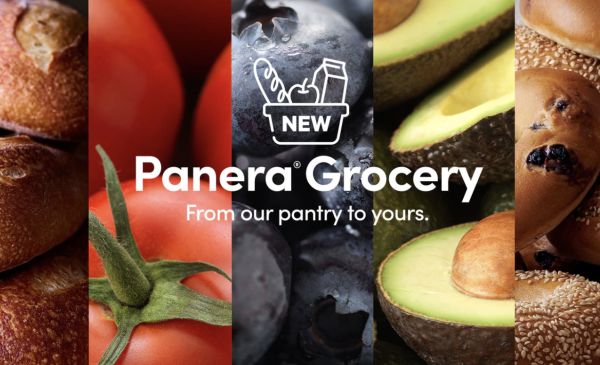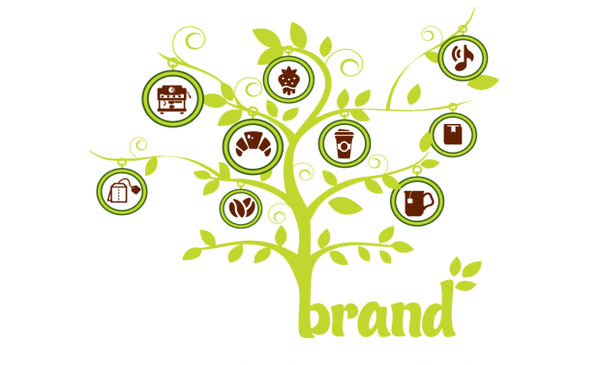We live in a time when consumers are in control. With greater access to information, choice in products and services, brands have found themselves shifting rapidly to adapt to what this new consumer not just wants but expects a brand to deliver. As a proactive response, some brands have put themselves in positions of risk or reward by extending into new platforms, new messaging strategies, or new lines of business altogether. While other brands, weary of fads and trends, have opted to wait and see to determine their next move.
Reward: Taco Bell Introduces The Bell: A Taco Bell Hotel & Resort
Taco Bell is a brand that has always had a bold approach to the flavor in which they’ve marketed their products. They’ve come up with some zany and off the wall TV creative, menu design, pop ups and campaigns that have well established that they are a brand that likes to have fun and cater to their fan’s appetite for just that. Earlier this year, they did something unexpected and created The Bell: A Taco Bell Hotel & Resort. Some may say that a quick service restaurant has no business in the hospitality space, or that it’s just a stunt to garner attention, or there’s no real ROI. But what Taco Bell did is powerful; they defied the boundaries of their own industry space and leaned into a marketplace trend of experiential programming. They are no strangers to taking risk, and this execution was no exception. The brand has already expanded beyond their original fast food footprint into their Cantina model which features a new design and alcoholic beverages along with a fashion collaboration with Forever 21; there was some baseline precedent on whether the chain could handle more than its traditional model. The Bell was an experience that at every touch point connected back to the Taco Bell brand; from the food that was served, to the room decor, to the hotel activities, to the exclusive merchandise, the brand took center stage as a platform to entertain and delight it’s guests.
The positive reaction, beyond a sellout time of just two minutes, can be felt in the brand evangelists who drove conversation, the press coverage that turned heads towards Taco Bell, and the unique opportunity to test product and merchandise in a space designed for the super fan. What Taco Bell has excelled in and continues to prove out is that risk, when built upon a deep knowledge of the consumer and its own brand identity, can be wildly successful. Whether or not Taco Bell will continue with a similar execution in the future has yet to be determined, but what is certain is that the brand will continue to embrace its core DNA of fun and cater to its fans in distinct and unexpected ways.
Reward: Amazon Adds Whole Foods To Its Cart
When Amazon decided to acquire Whole Foods, it was met with skepticism. Why was the largest e-retailer acquiring brick and mortar assets, a seemingly dying footprint of old-fashioned physical stores, and in some ways, a competitor to Amazon’s grocery offering? Amazon saw further than its established perception as a digital brand and instead led by example and stepped into its true identity as a convenience and service brand. What Amazon offers through its various lines of business has less to do with the platform and space it occupies and more to do with how it enhances a consumer’s life. Every touchpoint, ranging from Prime delivery to Smart Home AI Alexa, provides consumers with a way to simplify their everyday lives. With that framing, it should come as no surprise how a service, as basic as grocery shopping, could benefit from the efficiencies that Amazon is famous for. What Whole Foods excelled in Amazon had the infrastructure to accelerate. Whole Foods on its own faced challenges due to prohibitive cost for the average grocery shopper. According to Jeff Wilke, CEO of Amazon Worldwide Consumer, “When Whole Foods Market joined the Amazon family, we set out to make healthy and organic food more accessible. Over the last year, we’ve been working together tirelessly to pass on savings to customers.” Amazon, keen to not branch into a new business without folding it into its overarching promise of convenience and service, doubled down on embracing Whole Foods by rewarding those who are part of the Amazon family. There are a handful of promotional tactics designed to drive traffic in-store, targeted to incentivize consumers across the Amazon ecosystem. For example, customers who try Prime get $10 off their $20 purchase for signing up for a membership which includes perks such as free grocery pickup, free grocery delivery on orders over $35, Alexa shopping.
Amazon, with its ability to implement systems to more effectively scale while simultaneously driving loyalty among its Prime members, created a built-in benefit and influx of adoption. A win for the business and the consumer.
Risk And Consequence: Netflix’s Qwikster
Netflix over the better part of the last decade has risen from a streaming platform, to a content development and production house, to an unmistakable piece of the cultural zeitgeist. But before Netflix had found its rhythm, CEO Reed Hastings made some questionable choices, one in particular that backfired. In 2011, Netflix announced it would be splitting its services in two; one streaming option, Netflix, and one DVD-only option, Qwikster. For those consumers who enjoyed both options, they would have to pay the price for both, log-in to separate websites, and maintain separate queues. This came amidst the news of a price hike, which, as expected erupted into a sea of consumer outrage. The plot as seen by the consumer was to take a service that was working, increase the cost, while offering less choice, flexibility, and value in an effort for the company to squeeze more money out of each account. There is an alternative way to look at the situation. Netflix, seeing that the majority of its consumers were using their streaming-only service, sought to grow that business and do so by defining more clean lines between the two subscription models, to divest in one as they invested more steadily in the other. The stock price plummeted, uncomfortable scripted apologies were issued, and the blowback was longer lasting than anticipated. How did Netflix get is so wrong? They weren’t paying attention to the consumer and more importantly attention to how they messaged, positioned, and packaged up this fairly significant change to their product and service model. When consumers aren’t prepared for change, and the change they’re presented with isn’t in line with what they expect from a brand, no matter the intention, sentiment and perception will drop.
How Do You Know If Your Brand Is In A Position To Enter A New Territory?
The ultimate decision is not a simple one, but a careful and deliberate choice in what kind of brand you want to be and how you want to show up in the world. While not all risks pay off, if brands remain stagnant or intentionally opt out of moving with the tide of consumer motivations and preferences, the risk is seemingly greater that over time they will find themselves out of the consideration set with the possibility of drops in awareness, relevance, value, and loyalty. This isn’t to say change on a dime or change for the sake of change, but it is to say that as the world rapidly evolves brands need to be mindful of how they shift to meet consumers and rise above the competition, and when they need to hold and remain true to their brand mission and DNA, if risk may compromise that and create more harm than good.
It’s important to have a real read on the pulse of your consumers and their expectations and desires given the set of choices in the marketplace. On equal footing, it’s imperative to be diligent and not lose sight of who you are as a brand, what value you offer, and not deviate so far from that brand value and promise that you become unrecognizable to the consumers you’re hoping to connect with. When done with strategic precision and excellence in execution, brands expanding and evolving can reap immense reward: the potential to re-define and establish your brand, build consumer affinity and loyalty, spark industry and consumer conversation, and accelerate business goals.
When evaluating if your brand is ready and properly positioned to stretch into new territory, address the following core considerations:
Consumer Impact
- Does this choice show respect for the consumer relationship and deliver on their expectations?
- Does it enhance and improve their experience and relationship with your brand?
- Does it have the potential to driver deeper loyalty and advocacy?
Brand Impact
- Will stretching your brand into new territory grow the brand in a positive and organic way?
- Does it align to your existing brand DNA and brand promise? Will the brand stay true to itself or will this extension into new territory jeopardize that?
- Is the brand stable enough and identifiable enough to withstand extending into something new and unprecedented?
- Is this a short-term tactical choice or a long-term brand strategy?
Industry Impact
- Are there macro-level trends in the marketplace that point towards this brand extension being net positive?
- Are competitors already playing in a similar space with their brands?
- Does this brand extension have the potential to influence your industry in a bigger way?
- Will this allow your brand to step into a more progressive or noteworthy place within the industry?
As a final takeaway always remember – a brand at rest, stays at rest, while a brand in motion, stays in motion. Whether you choose to stretch into new territory now or pause until the right opportunity and moment presents itself, never stop advancing.
The Blake Project Can Help You Grow: The Brand Growth Strategy Workshop
Branding Strategy Insider is a service of The Blake Project: A strategic brand consultancy specializing in Brand Research, Brand Strategy, Brand Growth and Brand Education




